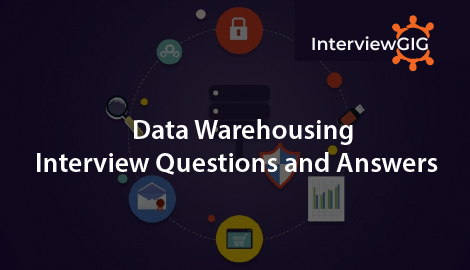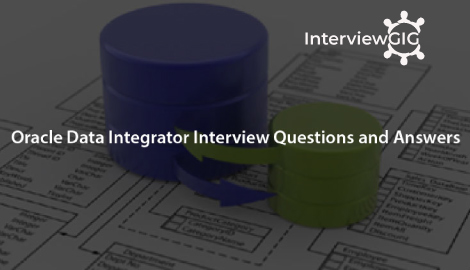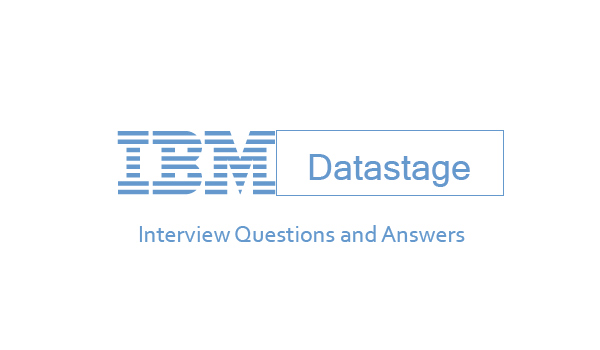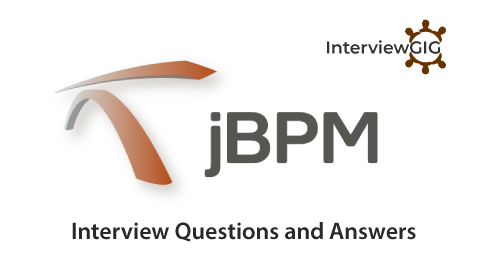What do you know about Data Warehouse?
Data Warehousing is the process of collecting, storing, and managing large volumes of data from different sources to support business intelligence and analytics activities. It involves transforming raw data into a structured format for analysis and reporting.
What are the key components of a Data Warehouse architecture?
The key components of a Data Warehouse architecture are:
Data Sources: The various databases and systems from which data is extracted.
ETL (Extract, Transform, Load) Process: The process of extracting data from the sources, transforming it into a consistent format, and loading it into the Data Warehouse.
Data Warehouse Database: The central repository where the integrated data is stored.
Business Intelligence Tools: The tools used for querying, reporting, and analyzing the data.
What is the difference between OLAP and OLTP?
OLAP (Online Analytical Processing) is used for complex data analysis and reporting, supporting business intelligence activities. OLTP (Online Transaction Processing), on the other hand, is used for real-time transaction processing in operational systems. OLAP focuses on read-heavy operations, while OLTP focuses on write-heavy operations.
What is the ETL process, and why is it important in Data Warehousing?
The ETL process stands for Extract, Transform, and Load. It is crucial in Data Warehousing because it is responsible for extracting data from various sources, transforming it into a consistent and suitable format, and loading it into the Data Warehouse for analysis. The ETL process ensures data quality, consistency, and integration across different sources.
Explain the difference between a Data Mart and a Data Warehouse.
A Data Mart is a subset of a Data Warehouse and is designed to serve the needs of a specific business unit or department. It contains a focused set of data that is relevant to a particular group’s requirements. In contrast, a Data Warehouse is a centralized repository that stores data from multiple sources across the entire organization
What are slowly changing dimensions (SCDs)?
Slowly Changing Dimensions are attributes in a Data Warehouse that change over time but at a slower rate. There are three types of SCDs: Type 1 (overwrite existing data), Type 2 (maintain historical data), and Type 3 (maintain limited historical data).
What are the different types of OLAP models?
There are two main types of OLAP models:
MOLAP (Multidimensional OLAP): It uses a multidimensional data model to organize data in cubes, with measures and dimensions for analysis.
ROLAP (Relational OLAP): It uses relational databases to store and manage multidimensional data, using SQL for querying.
What is a Star Schema and Snowflake Schema?
Star Schema and Snoflake Schema are two types of database schema used in Data Warehousing. In a Star Schema, the fact table is connected to multiple dimension tables directly, forming a star-like structure. In a Snowflake Schema, the dimension tables are further normalized into sub-dimension tables, creating a snowflake-like structure
How do you ensure data quality in a Data Warehouse?
To ensure data quality in a Data Warehouse, you can implement various measures such as data profiling, data cleansing, data validation rules, and exception handling during the ETL process. Additionally, regular data audits and monitoring can help maintain data quality over time.
What are the advantages of using a Data Warehouse?
Some advantages of using a Data Warehouse include
Centralized data repository for better data management and organization.
Improved data quality and consistency through the ETL process.
Support for complex analytics and business intelligence activities.
Enhanced decision-making through quick and easy access to valuable insights.
Historical data storage for trend analysis and pattern recognition.
What are the Traditional Data Warehouse Concepts?
- Dimension
- Conceptual Model
- Logical model
- Physical model
- OLTP
- OLAP
- ETL
- ELT
- Star Schema
- Snowflakes schema
- Kimball approach
- Immon approach
- Data mart
- Enterprise data warehouse
Can you explain Data warehouse use cases?
Data warehouse use cases focus on providing high-level reporting and analysis that lead to more informed business decisions. Use cases include:
- Carrying out data mining to gain new insights from the information held in many large databases
- Conducting market research by analyzing large volumes of data in-depth
- An online business analyzing user behavior to make business decisions
Can you define OLTP?
OLTP (On-Line Transaction Processing) is an application that modifies the data whenever it received and has large number of simultaneous users.OLTP databases emphasize fast query processing and only deal with current data. Such data systems are used for capturing information for business processes, providing source data for the data warehouse.
Can you define OLAP?
OLAP (Online Analytical Processing) is set to be a system which collects, manages, processes multi-dimensional data for analysis and management purposes. OLAP systems help to analyze the data in the data warehouse.
Can you explain ODS?
An ODS (Operational Data Store) is a database designed to integrate data from multiple sources for aditional operations on the data. Unlike a master data store, the data is not sent back to operational systems. It may be passed for further operations and to the data warehouse for reporting.
In ODS, data can be scrubbed, resolved for redundancy and checked for compliance with the corresponding business rules. This data store can be used for integrating disparate data from multiple sources so that business operations, analysis and reporting can be carried while business operations occur.
This is the place where most of the data used in current operation is housed before it’s transferred to the data warehouse for longer term storage or archiving.
Can you define ELT?
Extract, Load, transform (ELT) is a different approach to loading data. ELT takes the data from disparate sources and loads it directly into the target system, such as the data warehouse. The ystem then transforms the loaded data on-demand to enable analysis.
Can you explain real-time data warehousing?
Real-time data warehousing captures the business data whenever it occurs. When there is business activity gets completed, that data will be available in the flow and become available for use instantly.
How is a data warehouse different from a regular database?
Data warehouses use a different design pattern from standard operational databases systems. The latter are optimized to maintain strict accuracy of data in the moment by rapidly updating real-time data. Data warehouses, by contrast, are designed to give a long-range view of data over time. They trade off transaction volume and instead specialize in data aggregation.
What are the Cloud Data Warehouse Concepts (Amazon red shift)?
- Clusters
- Nodes
- Partitions/Slices
- Columnar Storage
- Compression
- Data load
What are the cons of a data warehouse?
Data warehouses are expensive to scale, and do not excel at handling raw, unstructured, or complex data. However, data warehouses are still an important tool in the big data technology.
Can you explain Cloud Data Warehouses?
Cloud-based data warehouses are a big step forward from traditional architectures. However, users still face several challenges when setting them up:
Loading data to cloud data warehouses is non-trivial, and for large-scale data pipelines, it requires setting up, testing, and maintaining an ETL process. This part of the process is typically done with third-party tools.
Updates, upsets, and deletions can be tricky and must be done carefully to prevent degradation in query performance.
Semi-structured data is difficult to deal with – needs to be normalized into a relational database format, which requires automation for large data streams.
Nested structures are typically not supported in cloud data warehouses. You will need to flatten nested tables into a format the data warehouse can understand.
Optimizing cluster: There are different options for setting up a red shift cluster to run your workloads. Different workloads, data sets, or even different types of queries might require a different setup. To stay optimal, you’ll need to continually revisit and tweak your setup.
Query optimization: user queries may not follow best practices, and consequently will take much longer to run. You may find yourselves working with users or automated client applications to optimize queries so that the data warehouse can perform as expected.
Backup and recovery: while the data warehouse vendors provide numerous options for backing up your data, they are not trivial to set up and require monitoring and close attention.






